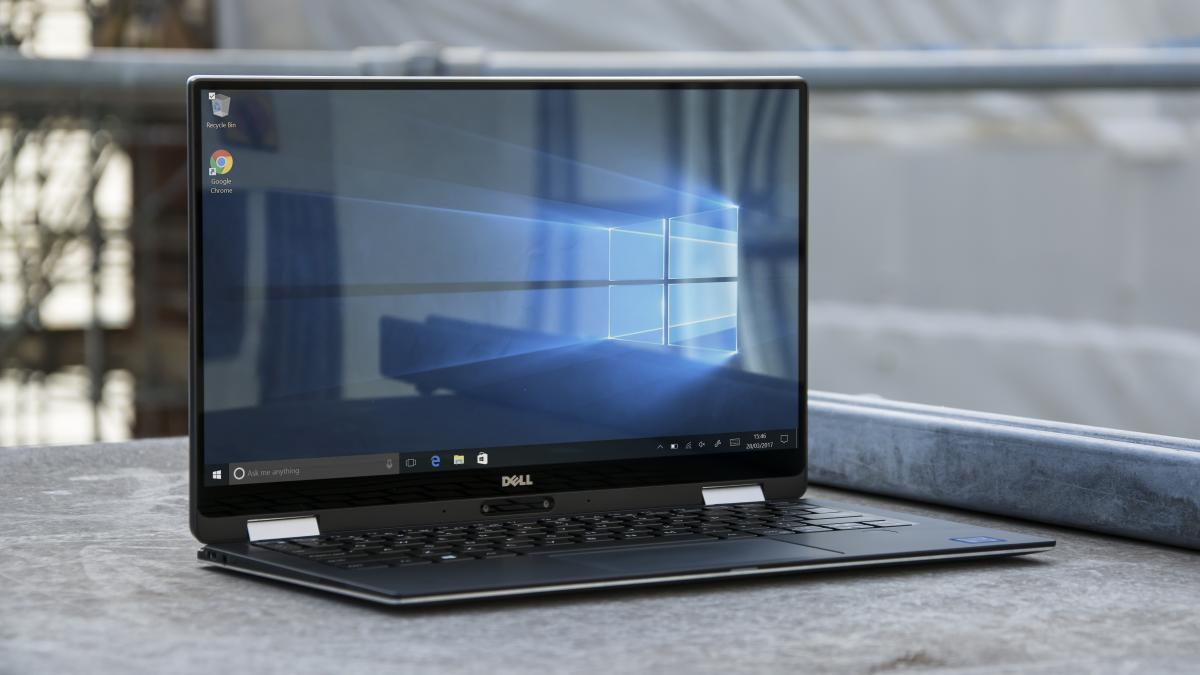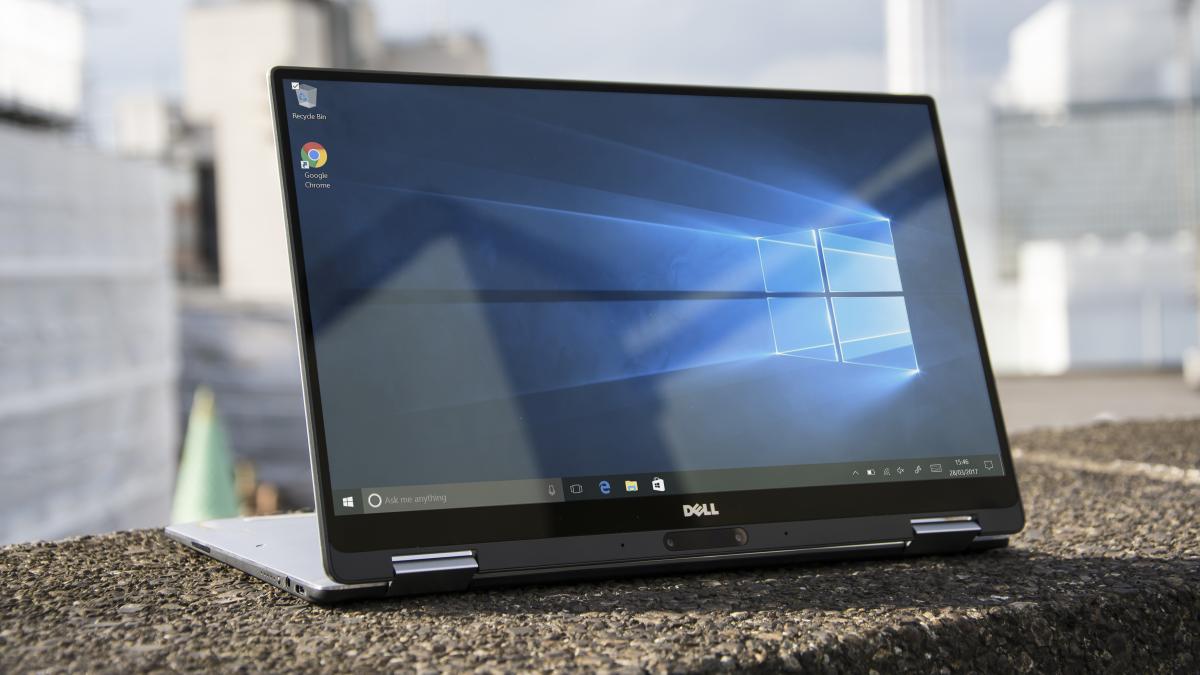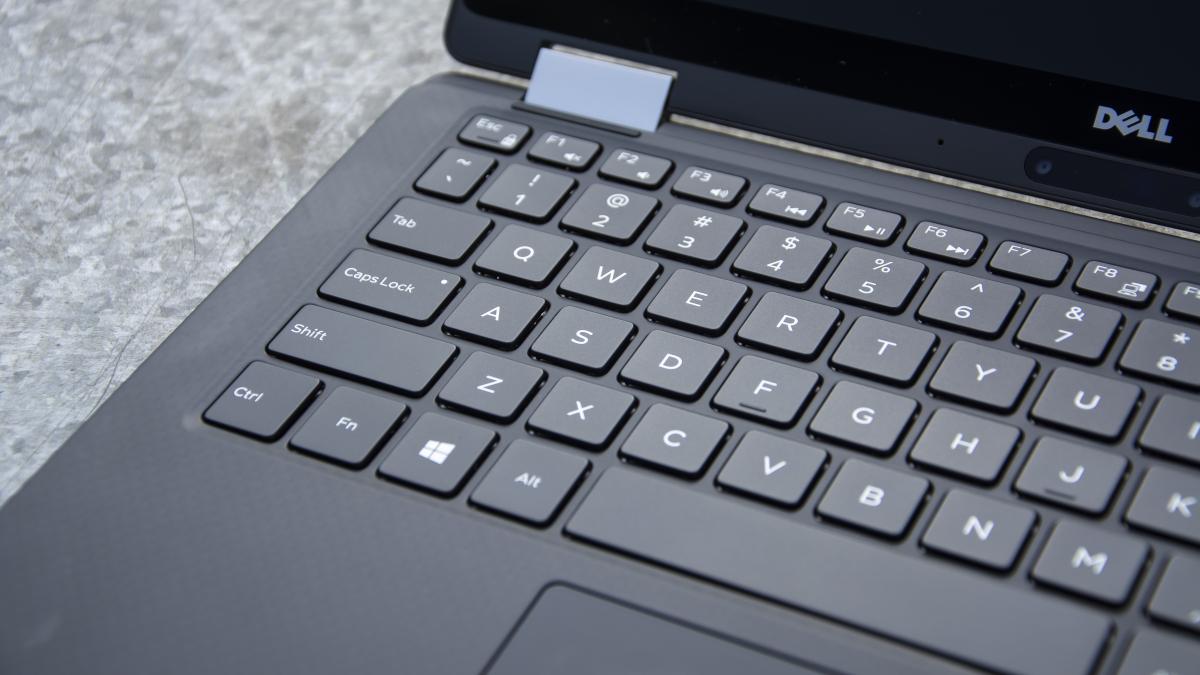Dell XPS 13 2-in-1 review: Lighter, but not faster
Are the performance upgrades worth the price?

If you're interested in a hybrid for light, everyday use, this is a great option, but your wallet won't thank you for it.
-
+
Breathtaking InfinityEdge display; Extremely versatile and portable; Thinnest XPS to date
-
-
Expensive

Dell has paid attention to criticisms of its previous laptops and hybrids, and decided to present a solution to those problems through this nifty device. The company has produced a versatile, portable and impressive hybrid which is certain to garner the attention of rivals such as HP and Toshiba.
A number of buyers will be tempted by how easy it is to take this hybrid with you when you're on the move but ultimately there is a let down when it comes down to its performance. It is a gorgeous 2-in-1 laptop, no doubt about it, but does it live up to its bigger sibling, the Dell XPS 13, and is it worth buying?
Design
The XPS 13 2-in-1 is sleek, light and smooth to the touch. It highly resembles its mainstream sibling, the XPS 13, although there are a number of design differences such as the camera placement, fingerprint reader and hinges.
It has a dual lens Windows Hello camera on the bottom of the screen which you can use for biometric log in, or, if you prefer, you can use the fingerprint reader.
For users who may not notice this straight away, to turn the laptop on there is a small button on the right hand side, next to the microSD card slot, which lights up once the device is running. We liked the small light located under the touchpad - a nice addition - as well as the standard keyboard backlighting.

The 2-in-1 is the thinnest XPS ever made, coming in at 13.7mm at its thickest and 8mm at its thinnest. It weighs just over 1.2kg, which is heavier than most other hybrids, but it's still easy enough to carry around with you and store in your bag.
There are no full size USB slots on this XPS; instead Dell has tried to make up for it by giving you two USB-C ports on either side of the laptop. Of course, it's worth remembering you'll be using one of them to charge the device.
Performance and battery life
Our review unit was comprised of a dual-core Kaby Lake Core i7 processor, as well as 8GB of RAM. The laptop features one of Intel's new low-powered chips which are designed to manage energy efficiency and heat. This means it doesn't need a cooling fan, making it a sleek and silent machine.
Perhaps because of this chip, we found it was placed towards the lower end of our performance charts, with an overall benchmark score of 31. That's behind the regular XPS 13, which scored a respectable 50 thanks to its full-power Core i5 processor.
That being said, this device works well for your usual desktop and browser-based applications, including Word and Google Docs. You might want to keep your hopes low if you decide to do something a bit more processor-intensive, though.
Technically, the low-powered chip should aid its battery life. The XPS 13 2-in-1 lasted 7 hours and 54 minutes in our continuous video playback test, which means it should give you a full day's conservative use without needing to stop and recharge.
However, its sibling, the XPS 13, was only eight minutes behind, so it's not clear whether it's worth opting for the lower-powered chip. This still doesn't come near the HP Elitebook X360, which had a battery life of 10hrs 46mins, which will be able to power you through a full working day with some battery to spare.
Display
Dell's award-winning display technicians have impressed us once again. The XPS 13 2-in-1 has a 13.3in InfinityEdge touch display and is very enjoyable to use. It provides a clear and sharp image on the 1920x1080 screen we were reviewing, and looks even better once you flip the screen over to tablet mode.
Similar to the XPS 13, it also has ultra thin bezels which make it extremely attractive. This gives it a certain aesthetic edge over devices like the Toshiba Portg X20W, which have good screens but larger bezels.
The device comes in a QHD 3200x1800 version, but this means paying an extra couple of hundred pounds on top of the base price of 1,299, as they're only availbe on the higher SKUs. The model we were testing costs 1,429, which is only 50 cheaper than the next model up. If your jaw has dropped because of the prices at this point, then you've probably figured out that it's not the cheapest laptop available on the market.
During our display tests, the Full HD display covered 85.4% of the sRGB colour gamut, with a contrast of 1206:1. It's only a slight dip compared to the latest XPS 13, which scored 91.9% coverage, which means you shouldn't notice it. Still, it's disappointing that the 2-in-1 couldn't match up to its stablemate.
The maximum screen brightness was slightly below the XPS 13's 289cd/m2 output as well, although its score of 253cd/m2 isn't bad. It's slightly behind the XPS 13, but that's not much of a criticism, considering that it was one of the more impressive laptop displays we've tested. It's a beautiful display which is mesmerising to look at, but you might want to avoid using it in very bright sunlight.
Keyboard and touchpad
Just like the XPS 13, the keyboard is great to use and the design has hardly been changed from its sibling; the keys are spaced out well, and they're firm and responsive. You can even adjust the brightness of the keyboard backlighting depending on what kind of conditions you're operating in.

There's also a good-sized touchpad with plenty of room on either side for your hands to rest on. The Windows 10 multi-touch gestures worked well - it's simple to hop between windows. The pad gives a resounding and strong click too, meaning that you won't necessarily need to use an external mouse.
Verdict
Dell has reflected on the problems of past hybrids it's created and found solutions for them in this new device. Even though its performance is slightly lacking compared to Dell's sandard clamshell notebooks, the XPS 13 2-in-1 is great to use and highlights exactly what the advantages of having a convertible are.
The device is lightweight, extremely handy and very business-friendly. It's got a solid keyboard, a beautiful display and a sleek design which will leave onlookers curious.
It's let down by its performance and disappointing battery life, however, not to mention the price. The entry-level XPS 13 is available for 1,149 and includes a Kaby Lake Core i5, which makes it hard to determine why you would pay an extra 200 for extra versatility.
If you have the money and want a nifty hybrid for day-to-day use, however, then you will be more than happy with this one. Those who are worried about its battery and performance may want to look at other hybrids like the HP Elitebook X360 or Toshiba Portege X20W, or even at standard laptops such as the Dell XPS 13.
Buyers who want to go all out and pay for one of the higher tiers of hybrid might want to consider the Microsoft Surface Pro, a truly astounding hybrid which is worth paying more for, as it produces an astounding performance and even has a fairly long battery life for a hybrid. If that doesn't convince you, then take a look at the best 2-in-1 laptops that we recommend and compare them to see which suits you best.
Verdict
If you're interested in a hybrid for light, everyday use, this is a great option, but your wallet won't thank you for it.
| CPU | Dual-core 1.3GHz Intel Core i7-7Y75 |
| RAM | 8GB |
| Storage | 256GB SSD |
| Display | 13.3in, 1920x 1080 (‘Infinity Edge’) |
| Ports | 2 x USB Type-C, miniSD Card, headphone jack, noble lock slot |
| Dimensions | 13.7mm x 304mm x 199mm, 1.24kg |
Get the ITPro daily newsletter
Sign up today and you will receive a free copy of our Future Focus 2025 report - the leading guidance on AI, cybersecurity and other IT challenges as per 700+ senior executives
Zach Marzouk is a former ITPro, CloudPro, and ChannelPro staff writer, covering topics like security, privacy, worker rights, and startups, primarily in the Asia Pacific and the US regions. Zach joined ITPro in 2017 where he was introduced to the world of B2B technology as a junior staff writer, before he returned to Argentina in 2018, working in communications and as a copywriter. In 2021, he made his way back to ITPro as a staff writer during the pandemic, before joining the world of freelance in 2022.
-
 ‘Phishing kits are a force multiplier': Cheap cyber crime kits can be bought on the dark web for less than $25 – and experts warn it’s lowering the barrier of entry for amateur hackers
‘Phishing kits are a force multiplier': Cheap cyber crime kits can be bought on the dark web for less than $25 – and experts warn it’s lowering the barrier of entry for amateur hackersNews Research from NordVPN shows phishing kits are now widely available on the dark web and via messaging apps like Telegram, and are often selling for less than $25.
By Emma Woollacott Published
-
 Redis unveils new tools for developers working on AI applications
Redis unveils new tools for developers working on AI applicationsNews Redis has announced new tools aimed at making it easier for AI developers to build applications and optimize large language model (LLM) outputs.
By Ross Kelly Published
-
 Google layoffs continue with "hundreds" cut from Chrome, Android, and Pixel teams
Google layoffs continue with "hundreds" cut from Chrome, Android, and Pixel teamsNews The tech giant's efficiency drive enters a third year with devices teams the latest target
By Bobby Hellard Published